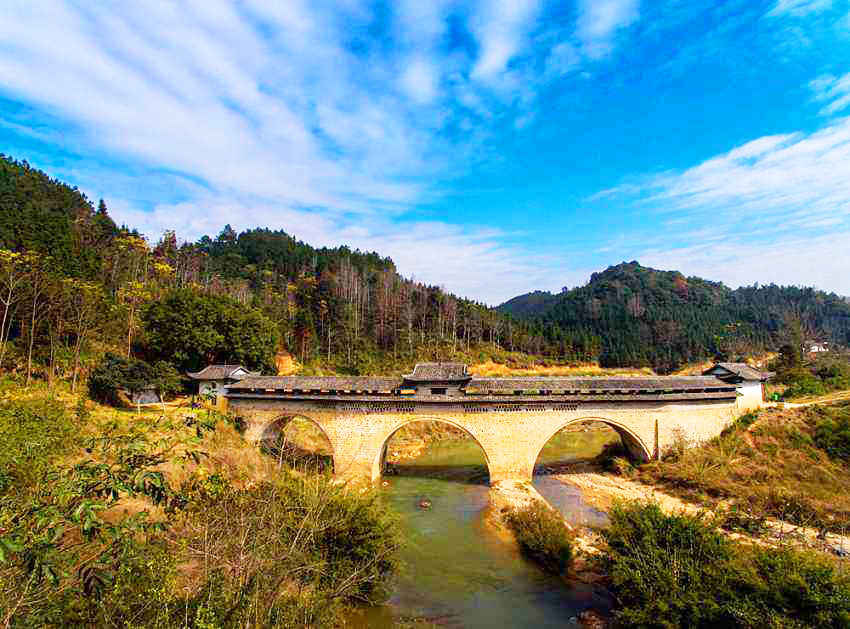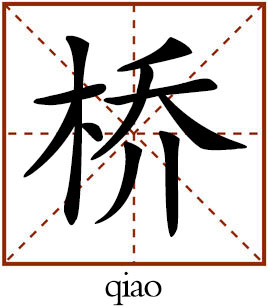Xinfeng Yudai Bridge: A silent witness and narrator

Yudai Bridge at Xinfeng County, Jiangxi Province was influenced by Hakka culture.

The Chinese character “qiao” means “bridges.” Using materials including bamboo, vine, wood and stones, ancient Chinese developed various forms of bridges, including beam arch, suspension and pontoon bridges.
The southern area of Jiangxi Province is often deluged with rain and thus, unsurprisingly, is populated with a large number of rivers. This is why bridges played an indispensible role in ancient transportation. A large number of “lounge” bridges with Hakka characteristics, where people could take shelter and relax, were built in this region. The Yudai (Jade Belt) Bridge over the Hushan (Tiger Mountain) River at Xinfeng County is one of the most unique and magnificent bridges of this style.
The Yudai Bridge is an arch bridge made of stones and bricks. It has three bridge piers and three arches. The piers stand nearly six meters above the river surface.
Stepping on the bridge floor paved with cobblestones and walking along the low walls that serve as rails, visitors will soon reach the pavilion at the middle of the bridge. The pavilion also served as a temple of the gods. Boards each inscribed with four Chinese characters were put up on the east and west side of the temple, saying “God bless the sea and ocean. May dragons harness the surging wave.” There is also a couplet that hangs on the stone pillars, saying “The building and stability of this bridge rely on the kindness of the saints and gods; However broad and deep the sea and river may be, we no longer need boats or oars.”
The bridge tells a story of a kind county gentleman. The Hushan River obstructed the most convenient post route connecting the county and Guangdong. Only with bamboo rafts could the travelers cross the river. However, the rapid flows of the river in spring and summer sometimes claimed lives. During the reign of Emperor Qianlong (r.1736-1796), a kind local gentleman Yu Fengqi, decided to donate money to build a bridge.
The story goes that the project was gigantic due to the broad river that the bridge was supposed to cross over. The bridge was still not finished even after Yu donated all his money.
Desperate about the situation and following the instruction of a Buddhist monk, Yu put shackles on himself and knelt ascetically every several steps, all the way from his hometown to the County seat. He told the people along the road about his project and promised to serve whoever helped complete it.
At last, a kind widow was moved by his perseverance and sincerity and helped him finish building the Yudai Bridge. The shackles are still preserved today by the descendants of the widow. In memory of Yu Fengqi’s kind behavior of financing the building of the bridge, people also named the bridge Fengqi Bridge.
The ancient transportation route has been abandoned for years. The Hushan River no longer rages as it used to. The Yudai Bridge, just like an old person who has been through the vicissitudes of life, silently watches the quiet river and welcomes the coming and going of the people.
